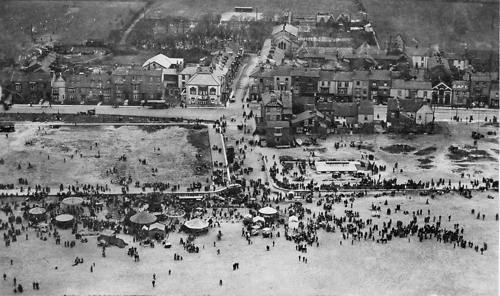 Hartlepool Sports & Leisure
Hartlepool Sports & Leisure
- Cinemas, Theatres & Dance Halls
- Musicians & Bands
- At the Seaside
- Parks & Gardens
- Caravans & Camping
- Sport
 Hartlepool Transport
Hartlepool Transport
- Airfields & Aircraft
- Railways
- Buses & Commercial Vehicles
- Cars & Motorbikes
- The Ferry
- Horse drawn vehicles
 A Potted History Of Hartlepool
A Potted History Of Hartlepool
- Unidentified images
- Sources of information
- Archaeology & Ancient History
- Local Government
- Printed Notices & Papers
- Aerial Photographs
- Events, Visitors & VIPs
 Hartlepool Trade & Industry
Hartlepool Trade & Industry
- Trade Fairs
- Local businesses
- Iron & Steel
- Shops & Shopping
- Fishing industry
- Farming & Rural Landscape
- Pubs, Clubs & Hotels
 Hartlepool Health & Education
Hartlepool Health & Education
- Schools & Colleges
- Hospitals & Workhouses
- Public Health & Utilities
- Ambulance Service
- Police Services
- Fire Services
 Hartlepool People
Hartlepool People
 Hartlepool Places
Hartlepool Places
 Hartlepool at War
Hartlepool at War
 Hartlepool Ships & Shipping
Hartlepool Ships & Shipping

Aerial shot of Seaton Carew Front
What we know about this image :
An aerial shot of Seaton Carew Front at the junction with Church Street. The Seaton Hotel is the white building in the picture. A busy day with lots of people about and shows on the beach. No bus station which was built in the 1930s.
HHT&N 570
Donor : Hartlepool Library Service
Location
Related items :
 Seaton Hotel
Seaton Hotel
From 1787 the Ship Inn was being advertised to be let with two fields adjioning and several houses and garths. The occupants of the houses were Richard Walker, Joseph Dobson senior, Elizabeth Bell, Ann Liddell, James Lithgo and Robert Ferguson.
Newcastle Courant 19th February 1791:
'To be let (for a term of years if required) and entered upon the 12th of May next, the Ship Inn at Seaton Carew near Hartlepool, with the gardens, stables, coach houses and other offices and conveniences, and a sufficient quantity of ground thereunto adjoining. Seaton is well known to be the most pleasant and elible situation on the coast for sea-bathing. The town is close upon the beach which is remakably fine smooth and firm for several miles on each side and furnishes one of the most pleasing rides in the country, commanding not only a beautiful sea prospect, but a delightful view of the Tees Bay, Cleveland Coast, hills &c on the opposite shore. This Inn has been for many years much frequented and well accustomed, particularly in the Bathing Season; and to render it more commodious and to encourage a good Tenant, the Proprietor is willing to make such additions and improvements as may be deemed useful and necessary. Mr George Metcalf of Seaton will show the Premises; and Mr Mowbray of Sherburn House, near Durham will let the same.'
It appears that the property did not attract a tenant as George Pearson, a wealthy gentleman of Durham who already had considerably property in Seaton Carew, by 1792 had purchased the Ship Inn & all that went with it. By 1794 he had pulled down the old building & had a coach house & three adjoining houses built on the site to cater for the wealthy Quakers who frequented the village during the summer months. The coach house was named the New Inn & remained so until the name changed to the Seaton Hotel between 1800 & 1804 although, on occasion, up until 1808 the media still referred to the property as the Ship Inn. The lodging houses in Church Street were connected by a passageway through the cellars from the inn kitchen.
More detail »




